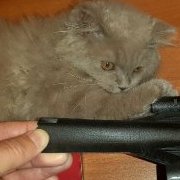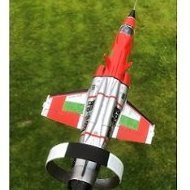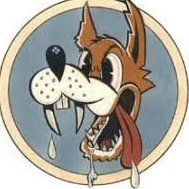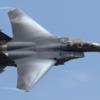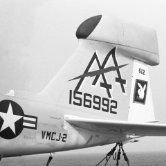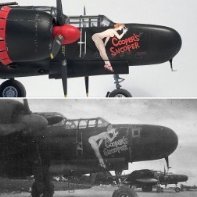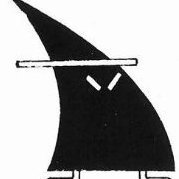-
Posts
3,529 -
Joined
-
Last visited
-
Days Won
2
David H last won the day on April 9 2024
David H had the most liked content!
About David H
- Birthday 17/06/1966
Profile Information
-
Gender
Male
-
Location
Bremerton, Washington
-
Interests
Aircraft
Contact Methods
- Yahoo
Recent Profile Visitors
7,201 profile views
David H's Achievements

Very Obsessed Member (5/9)
6.1k
Reputation
-
I'm a bit late on the uptake, but if the sanding surface doesn't need to be super rigid i'd consider chopping down a God Hand sanding block and or a piece of Tamiya sponge and manipulate it with a tweezers. Not a perfect solution, but a wide range of sanding grits and hopefully will not put unwanted divots in what should be a pretty smooth surface.
-
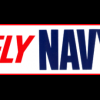
DH Sea Vixen FAW2 - High Planes1/72
David H replied to Pat C's topic in Ready for Inspection - Aircraft
As Jonathan Mock would say: "Great kit, terrible replica". Having seen a finished Cyber Hobby Vixen just recently ,the issues with the nose especially and the canopy are obvious. This canopy almost looks like it belongs on a Wyvern. -d- -
As long as it works for you, that's all that matters. -d-
-
That looks beautiful. You certainly don't need my help!!
-
Don't discount Tamiya LP-11 and LP-38!! For starters you could mask and paint the control tabs on the ailerons. -d-
-
There's a lot to unpack here, but i'll list everything i can remember. 1) The first step doesn't have so much to do with the paint application, but the adhesion. I usually prime my models either partially or completely during the build process and then sand it back to bare plastic. This is *mainly* to troubleshoot and inspect for seams, gaps and deep sanding scratches, but in so doing the surface now has "tooth" for the subsequent coats of paint to bit into. 2) I will prime my models using a combination of Tamiya White Spray primer decanted into the airbrush, to which i add XF-4 Yellow Green to tint it. This then gets thinned down and shot through the airbrush like any other paint. With some exceptions, planes were usually primed with some variation of Zinc Chromate Primer before the camo colours go on. Once the primer is on the model, i will carpet bomb it with Mr Leveling Thinner and as the re-animated paint sets up (again) it levels out nice and smooth. 3) once dry, if there are any areas of roughness, i will wet sand those down with a piece of 4000 grit micromesh. Hopefully i don't have to go over the entire model. 4) I mix all of my colours from scratch using Tamiya acrylics. Now in a normal case, these paints go onto the model with a very flat finish. However, what i do with mine is i blend in some GX-112 Super Clear UVCut. You can theoretically use Tamiya X-22 Clear, but i haven't tried it. Now, depending on how much Super Clear you add, you can change the the paint from a slight eggshell to a definite semigloss. However, the Super Clear is thick stuff, and you need to add more thinner to the mix to compensate. The drawback is, it take more time to build up the requisite coverage. The benefit is the paint lays down more smoothly and the Super clear makes the dried paint harder and more wear resistant (though not chip-resistant). Again, once the model is painted, i carpet bomb it with Mr Leveling Thinner and set it aside to dry overnight. Finally, i give the model a coat of Mr Super Clear. This is jokingly referred to as the "Hard Candy Shell". Depending on the finish of the underlying paint, it may or may not require a second coat. In the case of the Wyvern, i applied two coats, allowing overnight drying time. When Super Clear cures and the thinner flashes off, a lot of the gloss is lost as the model dries overnight, which is why sometimes a second coat is needed. Once the Super Clear is on, I carpet bomb the model with Mr Leveling Thinner and allow it to dry overnight. Super Clear is very thick stuff; as it comes out of the jar. It's like corn syrup. It's virtually impossible to thin it too much, but it's definitely possible to not thin it enough. A 1:1 ratio is way too thick; a 2:1 ratio is still too thick. Realistically, you probably want to start by laying this stuff on with maybe 7 drops of thinner to 1 part Super Clear but the viscosities make precise mixing difficult. So, what i do is i fill my gravity feed paint cup with Mr Leveling Thinner, and then i transfer the Super Clear into the mix by dipping a cheap 1/4" wide paint brush into the Super Clear and then stir this into the paint thinner in the colour cup. Disposable paint brushes are great for mixing paint and cleaning out the colour cup; not so great for actual painting. Spray it on and give it a minute to flash off, and if necessary, add in one more brushful of Super Clear. If the airbrush feels like its struggling to shoot the mix through the brush, add more thinner. Does this help? -d-
-
Brief update from the Admiralty... Nothing is wrong with the Wyvern. The gloss coat is thoroughly cured and its ready to take decals. This time, for whatever reason, i wanted to get a bunch of the other sub assemblies (undercarriage doors, drop tanks, flaps, etc.) painted up and also gloss coated before i started with the decaling process. Undercarriage struts yet to be painted. Not entirely happy with the first attempt at painting the wheels; i may strip them back down and try again. No progress to speak of regarding the ejection seat, except to say i have one. The Starfighter canopy has come in for some re work, El Corsair Grande is pretty much ready for paint, and my VC10 looks jealously at a DC-8 which just went into the painting stage. Plus, there's this thing called a TBY SeaWolf that seems to be sucking me in... Multiple projects, each at a slightly different stage in the build process to cater for whatever modeling task/ mood suits me in a given day i guess. -d-
-
Yeah, this kit comes in for more than its fair share. But at least you get separate ailerons. Not me...
-

Airfix 1/48th Irish Air Corps Spitfire TR9
David H replied to keithjs's topic in Ready for Inspection - Aircraft
Nice looking Spitfire! I picked up the latest Airfix Model World with the build up, and i just watched Jen Wrights YouTube review on it a couple nights ago. Wondering if the recessed rivets will be on whatever 48th scale Airfix Spitfire comes next (you know, they still haven't done a Mk 21). -

Hobby Boss 1/72 TBM-3 Avenger
David H replied to Drakendk's topic in Ready for Inspection - Aircraft
I love it! We've kind of need a Turkey with the folded wing option for a while. Now the Airfix Wildcats have something to park next too. I also like the carrier deck you staged it on. -d-- 15 replies
-
- 1
-

-
I like it, Rob! Once the primer went on over the scratchbuilt overwing fairings, they look a lot better. -d-
-
I love it!! It looks every inch a Baby 737. The first- and the best!! Bring on the 727-100!! -d-



